Dogs are known for their notorious curiosity and keenness to explore new things. Often, they may get into scrapes that require medical assistance or first aid. If your furry companion experiences an eye infection or wound, using saline solution may be a viable home remedy to help cleanse and soothe their affected area. Saline solution, which is basically saltwater, can effectively remove debris from the eyes and wounds of dogs without any harmful side effects to the pup’s health.
When dealing with minor irritations like conjunctivitis or scratches/punctures that may have foreign objects lodged underneath the skin, vets recommend using isotonic saltwater or balanced electrolyte mixture on dogs. These solutions either come pre-packaged or can be prepared at home by mixing sterile water with sodium chloride (table salt) at specific ratios. It’s essential to ensure that the saline solution does not contain additives like preservatives which could be hazardous to a dog’s health.
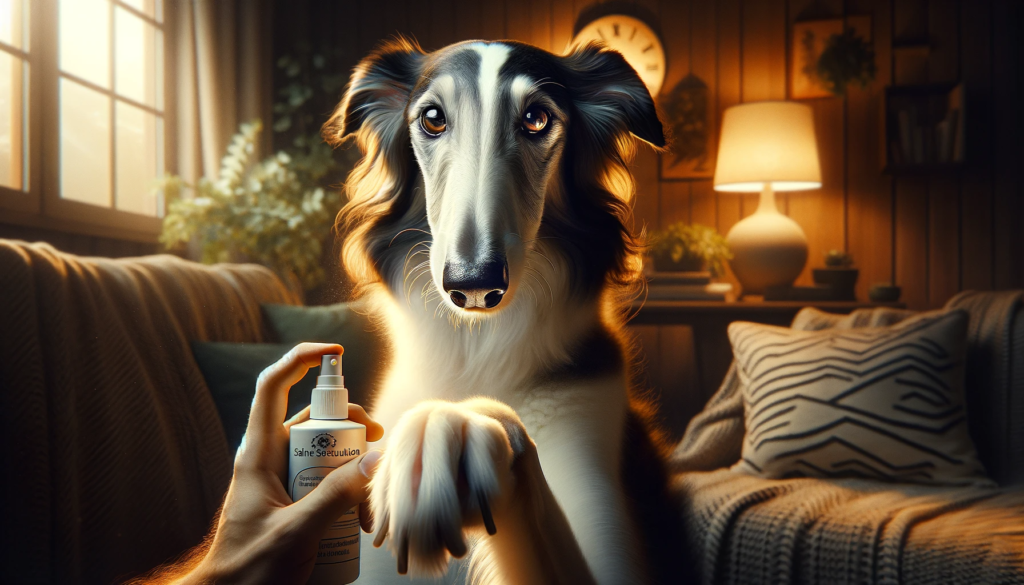
What is Saline Solution?
Saline solution is a mixture of salt and water that is used to treat various medical conditions. It can be administered intravenously, topically, or inhaled. Saline solution can also be used in veterinary medicine to clean wounds or flush out debris from the eyes. Its function is to remove harmful substances and prevent infections through its antiseptic properties.
When it comes to dogs, saline solution can be used as an effective and safe treatment option when prescribed by a veterinarian. However, it should not be used as a substitute for proper medical care.
Can Saline Solution be Used on Dogs?
To ensure your furry friend stays happy and healthy, you may be wondering if you can use saline solution on dogs. The answer is yes, but it is essential to understand the benefits and risks involved. In this section, we will explore both, including the benefits of using saline solution on dogs and the risks associated with using it improperly.
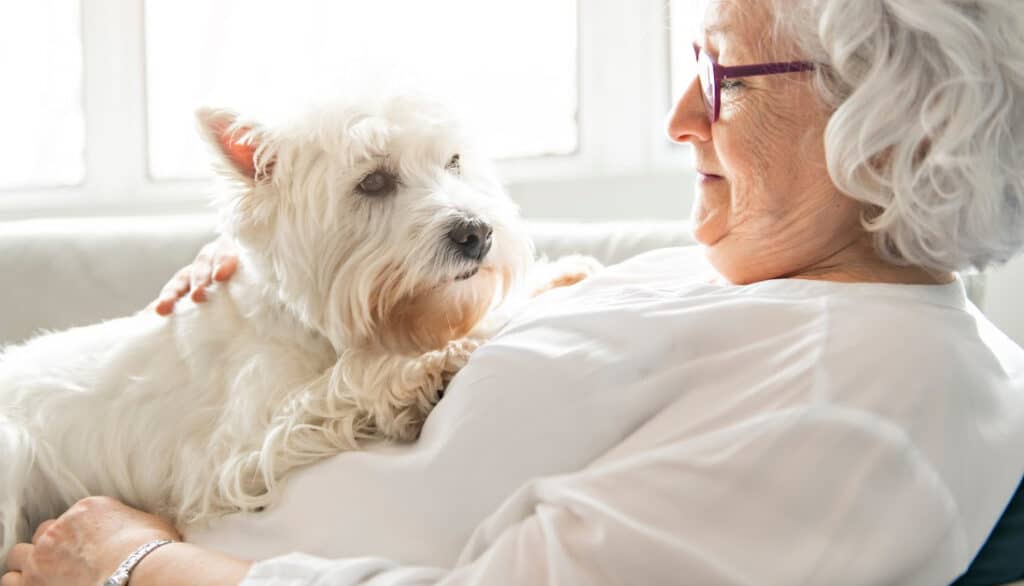
Benefits of Using Saline Solution on Dogs
Saline solution has become a popular alternative for treating various pet ailments and wounds. This accessible and budget-friendly fluid can provide many benefits in promoting the health of our furry friends.
- Hydration: Saline solution can replenish liquids lost during illness or excessive outdoor activities.
- Cleansing: Saline solution makes an excellent antiseptic that cleanses wounds, cuts, and debris as it moisturizes dry skin areas.
- Eyes & Ears cleaning: Saline Solution gently removes dirt and grime from around your dog’s eyes without irritation or damage to the delicate tissues.
Saline solution is safe to use for dogs when used in accordance with the veterinarian’s instructions. Its minimal side effects make it an effective option with various applications that every responsible dog owner should try!
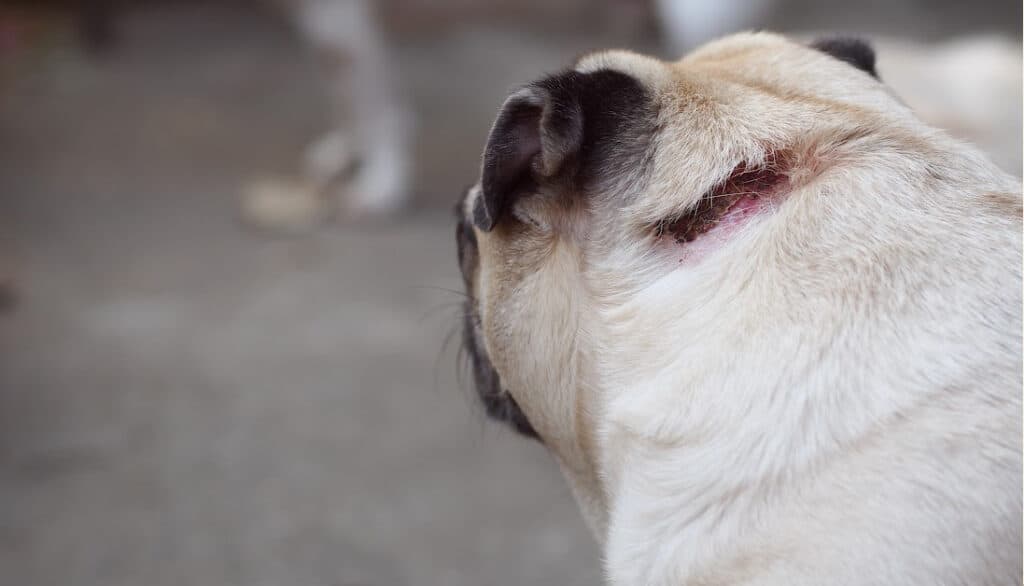
Risks of Using Saline Solution on Dogs
Using saline solution on dogs may seem like a quick fix, but it’s essential to understand the risks involved. If not used properly, saline solution can irritate your pet’s skin or cause serious health issues. One of the main risks of using saline solution on dogs is that it can change the pH balance of their skin and lead to adverse reactions like dryness and itching.
Additionally, frequent use of saline solution on your dog’s eyes can dilute the natural oils in their tear film. This reduction in lubricants can cause eye infections that may result in severe damage if left untreated. In some cases, the use of saline solution may also worsen existing medical conditions such as dermatitis, allergies or extreme dryness.

How to Use Saline Solution on Dogs
To use saline solution on dogs for wound care, cleaning and treatment, you need to know the right way. For effective use, this section, ‘How to Use Saline Solution on Dogs’ with sub-sections of ‘Preparing the Saline Solution, Cleaning the Wound or Affected Area, Administering the Saline Solution to Dogs’ as solution, provides you with the appropriate tips.
Preparing the Saline Solution
When it comes to administering saline solution on your dog, you need to ensure that the solution is appropriately prepared. Here’s a guide on how to properly prepare saline solution for your canine companion.
- Start by washing your hands and sanitizing all equipment.
- Measure out the correct amount of water needed based on your dog’s weight.
- Add the appropriate amount of salt to the measured water and stir until fully dissolved.
- Transfer the solution to a clean container and label it with the date and time of preparation.
It is essential to use clean supplies when preparing the solution, as contamination can lead to infections in your dog. Additionally, be sure only to use saline solution that is specifically made for veterinary use. Improper preparation or usage can cause harm or discomfort for your pup.

Cleaning the Wound or Affected Area
To properly clean wounds or affected areas on dogs, it is important to follow a specific process that ensures sanitary conditions and promotes healing. Start by preparing your saline solution, which can be made by dissolving table salt in water. Once the solution is prepared, follow these six steps for cleaning the wound or affected area:
- Put on gloves to avoid cross-contamination.
- Use a clean cloth to gently remove any debris or foreign objects from the wound.
- Soak a sterile gauze pad in the saline solution and apply it directly to the affected area.
- Gently wipe around the edges of the wound with another sterile gauze pad soaked in saline solution.
- Use a fresh gauze pad to continue applying saline solution until the area is thoroughly cleaned.
- Pat dry with a clean towel.
It’s important to repeat this process two to three times per day until the wound has healed or resolves, checking for signs of infection along the way and replacing any bandages as needed. Additionally, if you notice any unusual symptoms such as excessive swelling, redness, pus-like discharge, or if your dog seems to be in pain, seek veterinary care immediately without delay.
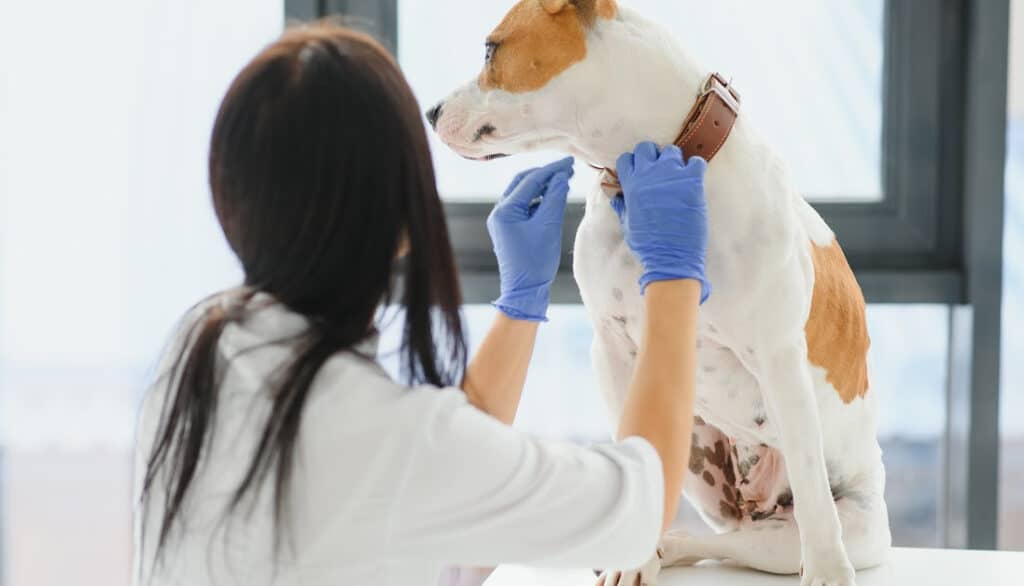
Administering the Saline Solution to Dogs
To effectively provide your furry friend with saline solution, it is important to understand the proper method of administration. Here’s a concise guide on how you can administer saline solution to your dog.
- Gather necessary items such as sterile saline solution, cotton balls or gauze, and treats.
- Position your dog in a comfortable position where its head is level with its body.
- Gently flush out dirt or debris from the eyes using a cotton ball soaked with the saline solution.
- Apply the saline-drenched gauze pad onto any wounds on your dog’s body requiring cleansing and let it stay for 5-10 minutes.
- Gently pat dry the applied area with a clean towel or cloth.
- Reward your pup with treats for their cooperation during the process.
Ensure that the saline solution used on dogs contains 0.9% sodium chloride concentration and no other additives, tampering with which could lead to complications and health risks for your companion animal.
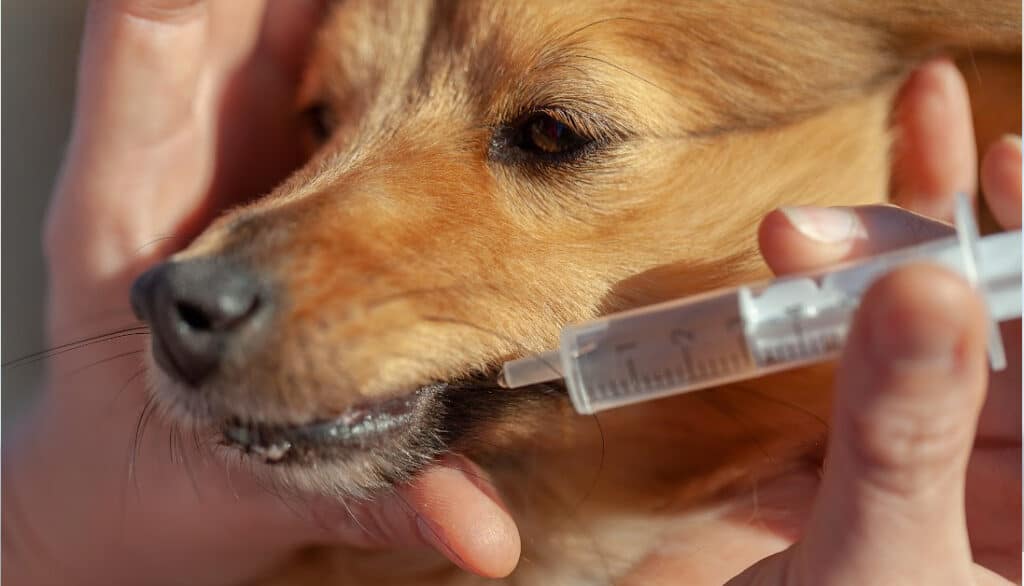
When to Use Saline Solution on Dogs
To address various health concerns of your furry friend, use saline solution on dogs. Dehydration, eye infections or irritations, cleaning wounds, nasal congestion, and ear infections are some of the most common reasons to use saline solution on your canine. Let’s examine each benefit in detail to ensure that you can take care of your dog’s health with confidence.
Dehydration
A canine’s lack of sufficient water and essential nutrients is termed as a condition of diminished fluid levels in the body. This medical situation makes your dog feel lethargic, weak, parched, and thirsty.
To counteract dehydration in your dog, first pay attention to their symptoms such as dry mouth, sunken eyes, and the elasticity of skin texture; then use various remedies like offering fresh water sources or electrolyte solutions to hydrate them. Additionally, Saline supplementation has also shown promising results in fighting dehydration.
When using saline for dogs, make sure you stick to the appropriate dosage level aligned with your veterinarian’s instructions. Avoid giving them too much saline, which could result in extreme thirst or even edema. Monitor their reaction carefully and address any concerns with your veterinarian.
In more severe cases, veterinarians will administer saline solution to your dog subcutaneously (under the skin). This is a great way to quickly rehydrate your pup and get them feeling better. Keep in mind, this should only be done by a veterinarian or under the direct supervision of a veterinarian.
Using several preventative measures also helps decrease the possibility of dehydration occurring in dogs. These include providing a consistent supply of clean drinking water at all times, walking pets during hot temperatures, while considering the age and breed of your pet.
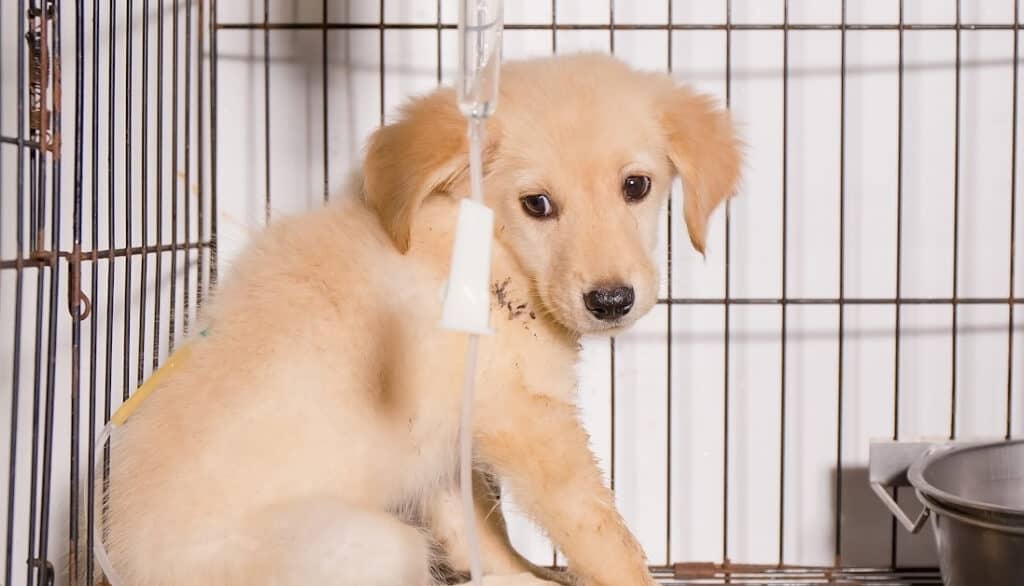
Eye Infections or Irritations
For dogs experiencing discomfort due to eye infections or irritations, saline solution can help alleviate symptoms. Saline solution is a gentle and effective way to flush out any debris or bacteria that may be causing the issue. It is important to note that saline solution should only be used for minor irritation or as directed by a veterinarian. In severe cases, it is important to seek professional medical attention for your furry friend.
Using saline solution on dogs suffering from eye infections or irritations can help reduce redness and inflammation while promoting healing. Simply apply the solution using a clean washcloth or sterile gauze pad and wipe gently around the eye area. Be sure not to touch the eyeball directly as this can cause further irritation.
It is important to monitor your dog’s symptoms and seek immediate veterinary care if they worsen or do not improve with at-home treatment solutions like saline. Eye infections and irritations can progress quickly if left untreated, potentially leading to more serious health issues in your pet.
Remember to always consult with your veterinarian before administering any treatment to your dog’s eyes and follow their instructions carefully. With proper care and attention, you can help keep your pup’s eyes healthy and happy.
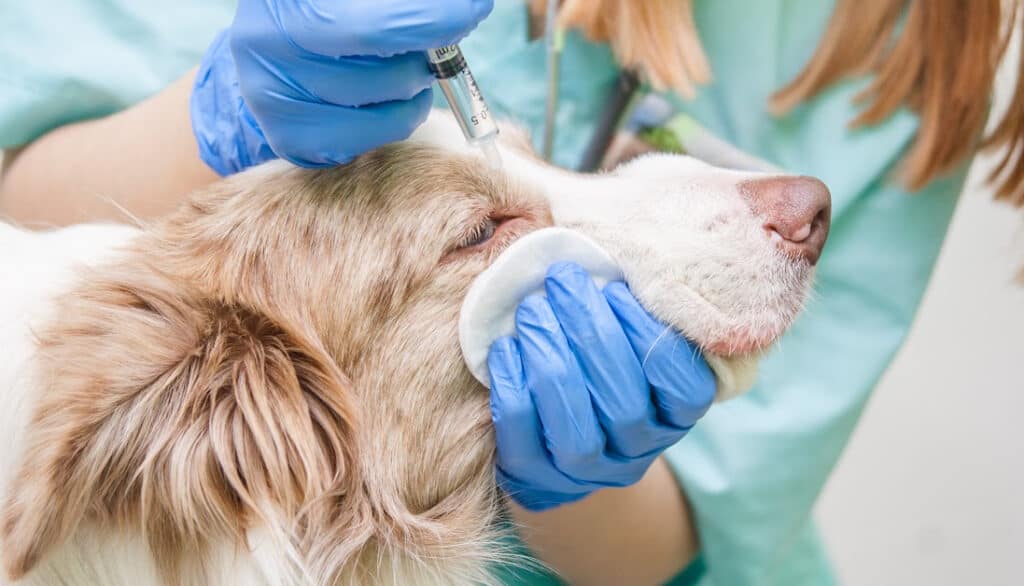
Cleaning Wounds
For effective wound care, the use of saline solution on dogs is highly beneficial. This ensures that the wound is cleaned thoroughly without causing harm or irritation to your furry friend’s skin. Saline solution is a mild and sterile liquid containing salt and water, used to flush out wounds while removing debris such as dirt and bacteria that can hinder healing.
When cleaning wounds with saline solution on dogs, it is important to follow specific guidelines. First, ensure that the wound is free from any pollutants by removing any excess hair surrounding the injured area. Next, clean the area with a small amount of saline solution by gently dabbing the surface with sterile gauze pads. Finally, pat dry the cleaned areas and apply dressing if necessary.

Nasal Congestion
When dogs experience stuffy noses, it is often accompanied by an excess of mucus and difficulty breathing. Addressing this issue can be done by using Saline Solution, which helps to moisturize nasal passages and loosen up mucus. Additionally, saline solution helps rinse out irritants, like allergens or bacteria, that may be causing the congestion.
Using a saline solution on dogs is relatively straightforward. A dropper or syringe can be used to administer the solution into each nostril. This process should be done carefully and slowly to avoid causing discomfort or alarm in the dog.
It is important to ensure that the saline solution used is specifically formulated for use on pets as solutions meant for human use may contain preservatives that are harmful to animals. Furthermore, while Saline Solution can ease nasal congestion in dogs, it may not work for all cases and underlying causes of congestion should always be investigated to treat any potential infections or allergies.

Ear Infections
For canine ear issues, saline solution is a useful remedy. It can help to maintain the hydration and pH levels of the ear canal while also cleaning it. This method is particularly effective when cleaning out dirt, wax and debris present in your pet’s ears.
When dealing with ear infections, it’s important to understand what kind of issue you’re dealing with before using saline solution as a treatment. Saline may not be suitable for treating all kinds of ear issues. For instance, if an infection has already set in, saline alone may not be sufficient to resolve the issue. In such cases, consulting a veterinarian and seeking medication might be necessary.
To prevent canine ear problems, pet owners should maintain proper grooming habits for their dogs including regular ear cleaning. It is best to use sterile saline solution for this purpose as other methods or products such as hydrogen peroxide can cause further damage if used incorrectly.
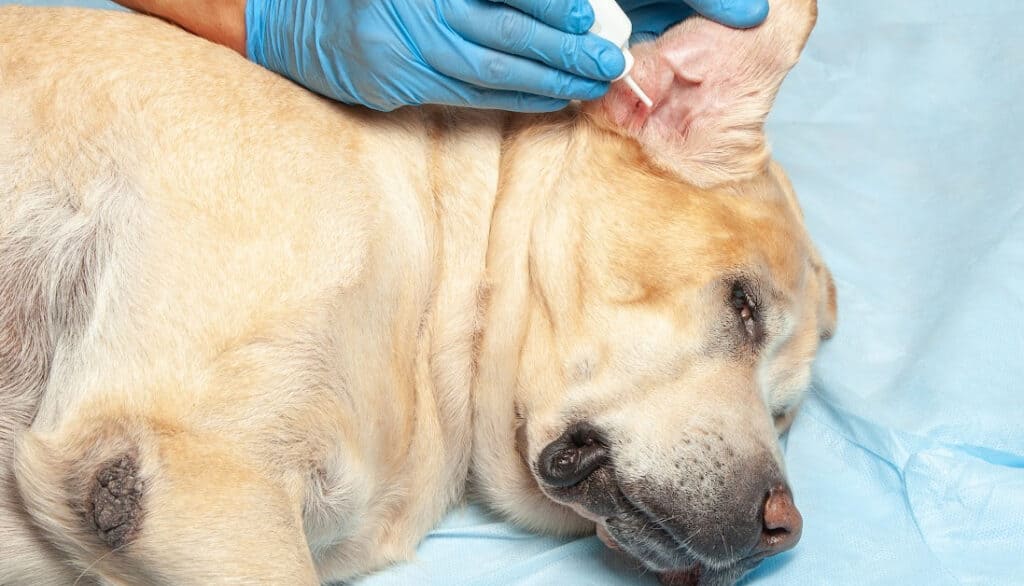
What to Consider Before Using Saline Solution on Dogs
To ensure that you use saline solution on dogs safely, this section provides you with three sub-sections as a solution. Consult with a veterinarian before administering saline solution to your dog, use only sterile saline solution, and monitor your dog’s reaction to the saline solution.
Consult with a Veterinarian
As with any medical intervention, seeking professional advice is always recommended before administering any treatments to your furry friend. It is imperative to consult a licensed veterinarian for all veterinary healthcare needs. Seeking professional input can provide critical information about dosing, frequency of treatment, and even potential side effects. With their extensive knowledge and expertise in animal medicine, veterinarians are an essential resource for ensuring the health and well-being of your pup.
In addition to providing essential medical guidance, veterinarians can also recommend sterile saline solution brands that are safe for use on dogs. Not all saline solutions marketed towards humans may be appropriate or safe for canine use. Veterinarian-recommended saline solutions will follow industry safety standards and have been deemed suitable for canine use by licensed practitioners.
It is also important to note that not all pet conditions can benefit from saline solution treatments. For example, dry eyes in dogs caused by naturally occurring factors may not improve with saline solutions and would require a different form of treatment. Therefore, it is vital to seek professional veterinary input before attempting any new treatments on your dog.
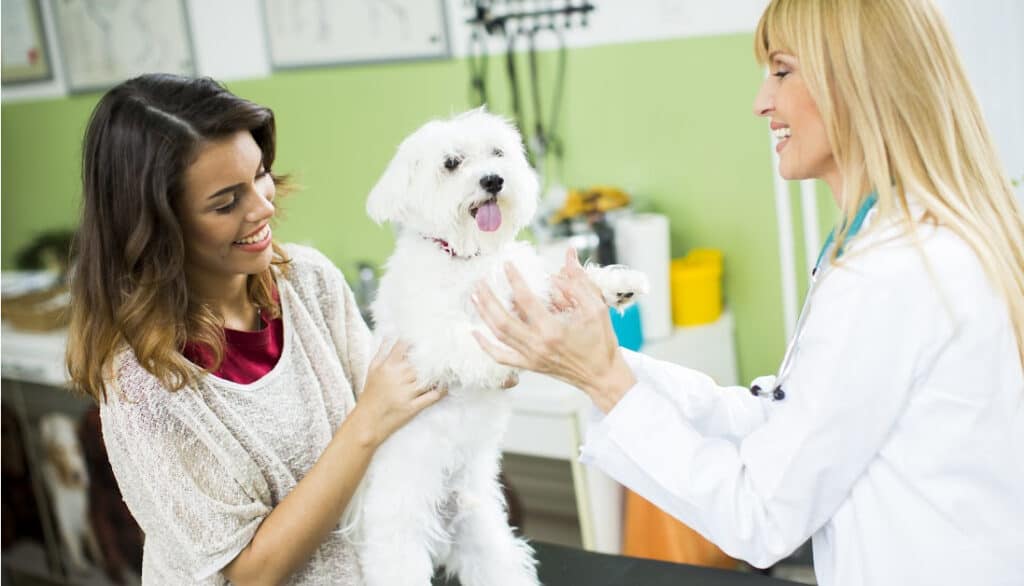
Use Only Sterile Saline Solution
Using sterilized saline solution is crucial for the overall care of dogs. Not only is it safe, but it also helps to prevent potential infections. Sterile saline solution should be used to clean wounds and prevent inflammation of eyes, ears or nasal passages.
It is imperative to take precautions when choosing a type of saline solution as some types may contain additives that can harm dogs. It is best to consult with a veterinarian before using any type of solution on dogs.
In addition, it is important to ensure that the saline solution is disposed of properly after usage. Used solutions should not be reused and must be disposed of in a way that does not pose any risk to the environment or other animals.
Remember to only use sterile saline solutions and avoid using homemade solutions which could cause harm to your dog’s health. Taking these small steps will ensure that your pet receives the best care possible.
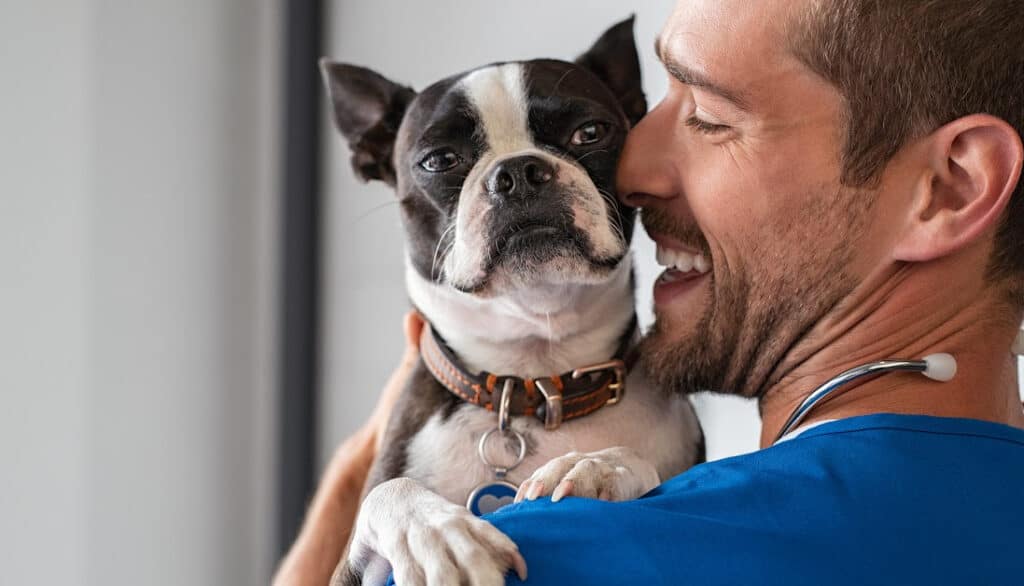
Monitor Your Dog’s Reaction to the Saline Solution
After using the saline solution on your dog, it is essential to closely observe their response. Checking for any adverse reaction is key to ensuring your dog’s safety and good health. Not monitoring them afterward could result in undesirable outcomes.
To monitor your dog’s reaction to saline solution:
- Observe your dog’s behavior after administering the saline solution.
- Check for any signs of discomfort or allergic reactions such as hives, itching, and excessive licking or scratching.
- Look out for inflammation, redness, discharge or swelling on the site where you applied the saline solution.
- Take note of any respiratory distress symptoms such as breathing difficulty, wheezing, coughing or panting.
- If you notice any negative reaction, contact a veterinary medical professional right away.
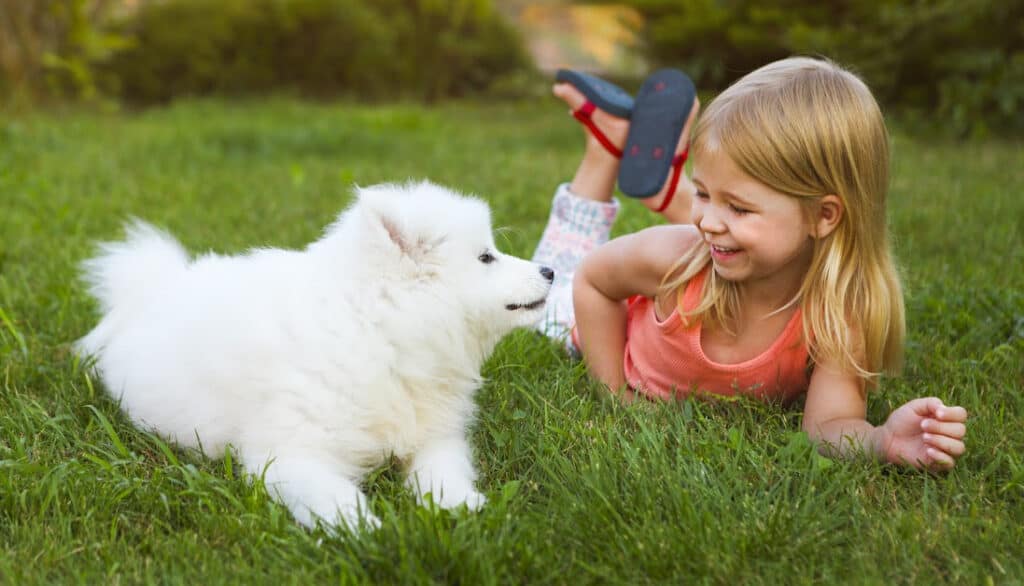
Conclusion
The use of saline solution on dogs is generally safe and effective for a range of issues. It can help soothe dry eyes, clean wounds, and flush out debris from the nose or ears. Care should be taken to use the appropriate concentration and delivery method, such as a dropper or spray bottle. In some cases, consulting with a veterinarian before administering saline solution may be recommended.
Frequently Asked Questions
Yes, saline solution is safe to use on your dog’s eyes. It can be used to clean their eyes or flush out any debris.
Saline solution can be used to clean your dog’s ears, but only if it is recommended by your vet. It should not be used as a treatment for any ear infections or conditions.
It is not recommended to make your own saline solution for your dog. The concentration of salt and water needs to be precise to ensure the solution is safe and effective. It is best to purchase a pre-made solution from a reputable source.
You can apply saline solution to your dog by using a sterile dropper or syringe. Gently squeeze a few drops into the affected area and then use a clean cloth or cotton ball to wipe away any excess solution.
Saline solution can be used to clean cuts or wounds on your dog, but it is important to seek veterinary care if the wound is deep or if there is excessive bleeding.
Saline solution is generally safe to use on a pregnant dog, but it is best to consult with your vet before administering any treatment.
